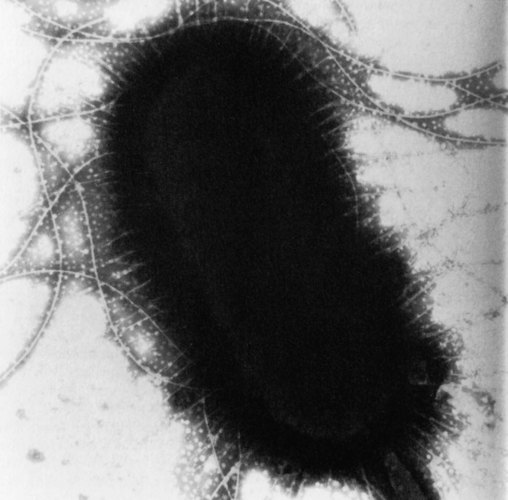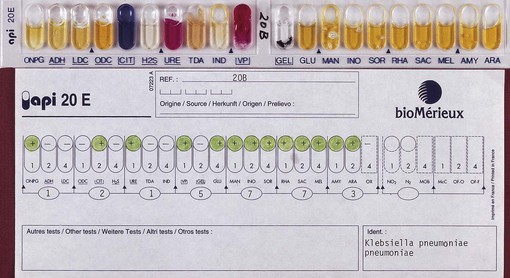Chapter 15 Enterobacteria
Most of the commensal Gram-negative rods that inhabit the normal gastrointestinal tract, and sometimes cause disease, belong to the family Enterobacteriaceae. All species belonging to this family are Gram-negative, facultative anaerobes that ferment glucose. The major medically important species are listed in Table 15.1.
| Genus | Representative species (no. of species) | Disease |
|---|---|---|
| Escherichia | E. coli (5) | Gastroenteritis, wound and urinary tract infection |
| Shigella | S. dysenteriae | Dysentery |
| S. flexneri | ||
| S. boydii | ||
| S. sonnei | ||
| Salmonella | S. typhi | Enteric fever (typhoid) |
| S. typhimurium (7 subgroups) | Food poisoning | |
| Klebsiella | K. pneumoniae (7) | |
| Morganella | M. morganii (2) | Urinary tract infection and other types of sepsis |
| Proteus | P. mirabilis (4) | |
| Providencia | P. stuartii (5) | |
| Yersinia | Y. pestis (11) | Plague, septicaemia, enteritis, etc. |
| Citrobacter | C. freundii (4) | Low pathogenicity, opportunistic infections |
| Enterobacter | E. cloacae (13) | |
| Serratia | S. marcescens (10) |
General characteristics of enterobacteria
Characteristics
Rapidly growing cells 2 × 0.4 µm in size; may appear coccobacillary. Many species are motile and possess a capsule, especially on initial isolation. All species are endotoxigenic because of the lipopolysaccharide outer cell wall. They also possess pili and flagella, which mediate adhesion and locomotion, respectively (Fig. 15.1).
Culture and identification
Other biochemical tests
Commercially available kit systems are routinely used to identify species of enterobacteria. The commonly available test systems are based on 10 (API 10E) or 20 (API 20E, Rapid E) biochemical tests (Fig. 15.2).
Stay updated, free dental videos. Join our Telegram channel

VIDEdental - Online dental courses




